March 21, 2018 is World Poetry Day, we’re getting into the spirit with some scientific poetry. Science and poetry overlap more than many diehards in either camp would like to admit. History is filled with poets who dabbled in science, as well as scientists who dabbled in poetry. In honor of World Poetry Day, I’ve pulled out some of my favorites.
James Clerk Maxwell – Physicist
Maxwell is best known for his equations describing electromagnetism, but he was also a prolific poet in his spare time. Some of his poems are humorous, such as “Valentine by a Telegraph Clerk (male) to a Telegraph Clerk (female)” (pictured). Others offer explanations of complex concepts – “A Problem in Dynamics,” for example, walks the reader through an entertaining explanation of a mathematical problem.
Maxwell was passionate about poetry and often complained about those who saw the world purely through the lens of math and physics while ignoring creative arts. He and his contemporary William J.M. Rankine (a theorist working in thermodynamics) published several poems lampooning their peers, such as Maxwell’s “To the Chief Musician Upon Nabla: A Tyndallic Ode” and Rankine’s “The Mathematician in Love.”
J.W.V. Storey – Astronomer
In 1984, Australian astrophysicist J.W.V. Storey was the first scientist to publish an article in a research journal entirely in poetry. His 38-stanza poem, titled “The Detection of Shocked CO Emission from G333.6-0.2,” included handwritten notes and a thorough explanation of methods and results, presented in rhyming common meter. Storey wrote his article as a poem out of spite when he was scheduled as the last speaker at a conference, but the format actually helps break down his complex research into easily understood language. The poem was originally published in the 1984 edition of Proceedings of the Astronomical Society of Australia.
Mary E. Harrington – Biologist
Later in 2001, biologist Mary E. Harrington published the first non-research poem in a scientific journal. Her poem “Feedback” (pictured) expresses her profound fascination with the circadian rhythms of the bioluminescent algae she was studying. The poem was published in the June 2001 edition of Journal of Biological Rhythms, though I noticed she omits it from the CV on her website.
Albert Goldbarth – Poet
First of all, if you haven’t read Albert Goldbarth, go read some Albert Goldbarth. He’s a contemporary poet who’s published over thirty books, and is still writing today. I hadn’t read this specific poem until my friend, a poet who I met in biology class, recommended it to me. “The Sciences Sings a Lullaby” is a beautiful poem that taps several scientific disciplines to piece together a lullaby. I’ve found that it makes me stop and think about how I see the beauty of the world differently because of my own scientific background. At the same time, though, it points out how despite the differences in our perspectives, we’re all united in our fascination with the natural world, and our dedication to always learning more.
Walt Whitman – Poet
While most of Whitman’s work focused on themes such as death and sexuality, he often includes references to his admiration of science and nature. In “Song of Myself,” for example, Whitman writes, “Hurrah for positive science! Long live exact demonstration! (Stanza 23)” and later spends several lines praising chemists, geologists, and many other scientists. In “When I Heard the Learn’d Astronomer” (pictured), however, the narrator doesn’t praise the scientist himself, but instead walks out of a lecture to go gaze up at the stars in wonder.
Be sure to also check out our Facebook and Twitter feeds today for more poetry from several Promega science writers and our favorite cartoonist Ed Himmelblau.
Sources
Goldbarth, A. (2007). “The Sciences Sing a Lullaby.” The kitchen sink: New and selected poems, 1972-2007. Saint Paul, MN: Graywolf Press. Retrieved from Poets.Org, March 21, 2018.
Harrington, M. E. (2001). “Feedback.: Journal of Biological Rhythms, 16(3), 277-277. Retrieved from Brain Pickings, March 21, 2018.
Maxwell, J.C. (1860). “Valentine by a Telegraph Clerk (Male) to a Telegraph Clerk (Female).” Retrieved from New Scientist, March 21, 2018.
Whitman, W. (1865). “When I Heard the Learn’d Astronomer.” Leaves of Grass. Retrieved from Poetry Foundation, March 21, 2018.
Latest posts by Jordan Villanueva (see all)
- Tackling Undrugged Proteins with the Promega Academic Access Program - March 4, 2025
- Academic Access to Cutting-Edge Tools Fuels Macular Degeneration Discovery - December 3, 2024
- Novel Promega Enzyme Tackles Biggest Challenge in DNA Forensics - November 7, 2024
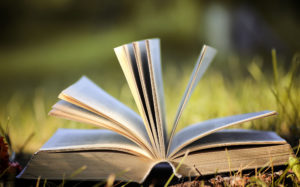
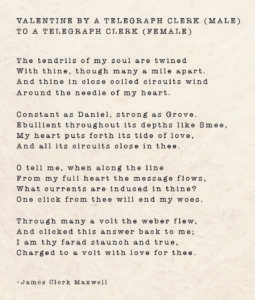
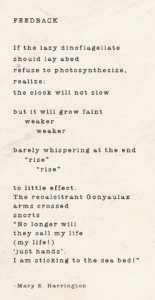
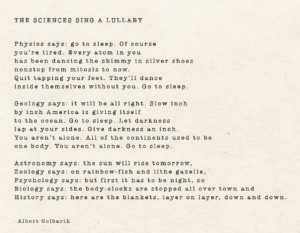
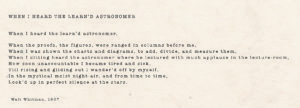

I totally agree that those who are limiting their view of the world through the lenses of math and science are missing out on all of the beauties of the creative arts. My wife always tells me that I am too serious and that I need to open up to more creative outlets. After painting with my wife for a date night, I understand the subtle beauty that can be in creativity.
Science vs Poetry :
Polish poet Juliusz Słowacki [1809-1849] wrote between 1843/4-1846? a mystical prose poem entitled “Genesis from the Spirit” published in 1871. If we reduce the mystical parts of the poem to a minimum and leave only the purely « objective » parts, we arrive at his poetic description of the “Big Bang” :
“…The Spirit… turned one point… of invisible space into a flash of Magnetic-Attractive Forces. And these turned into electric and lightning bolds – And they warmed up in the Spirit… You, Lord, forced him… to flash with destructive fire… You turned the Spirit… into a ball of fire and hung him on the abysses… And here… a circle spirits… he grabbed one handful of globes and swirled them around like a fiery rainbow… “
This is how poetic intuition could anticipate the scientific discoveries…
(see :
https://www.salon24.pl/u/edalward/1334289,big-bang-according-to-the-19th-century-polish-poet-j-slowacki )
How is it possible that a writer, poet or mystic is sometimes able to predict the future or explain the secrets of nature better, faster than scientists ? A scientist is bound by many strict regulations and protocols. An artist, is much more freer n his approach. This freedom allows artists to penetrate the mysteries of nature in a direct way. It has been a topic that has occupied the attention of great minds for centuries…
Polish poet Stanisław Wyspiański [1869-1907] explains it like this:
“I have this gift: I see things in a different way. Not like you, who do not educate your eyes, for whom God has created clichés and stereotypes, You, who, impressed by my art, call me a “prophet” and subject me to schoolboy questions,
So I took the liberty of taking a mental journey – incognito and somewhere off the beaten track, And suddenly I found myself with my old comrade Muse – and for her, there are no secrets, obscurities, or darkness, as true talent ignores any doubts. And it doesn’t matter whether or not the Academies will recognize the importance of my investigations and the details of my research and award me bonuses or medals.… I do not regard knowledge as something so special, as such an unusual thing that would walk on two stilts. Art is of the mind, it can’t be manufactured, it is created, and once created by the mind, it is a certainty. That’s why I consider my scientific thoughts to be as good as those of people with scientific degrees, and that’s why I think that anyone to whom God has given a home, that is, someone who has a good head on his shoulders and gets everything out of his head, it’s easy for him to do without many advisors…” / S. Wyspiański NOTY DO “BOLESŁAWA ŚMIAŁEGO”
(S.Wyspiański was also a very interesting painter, see: https://elhurgador.blogspot.com/2018/06/stanisaw-wyspianski-pintura-dibujo.html )
Best Regards
E.M.